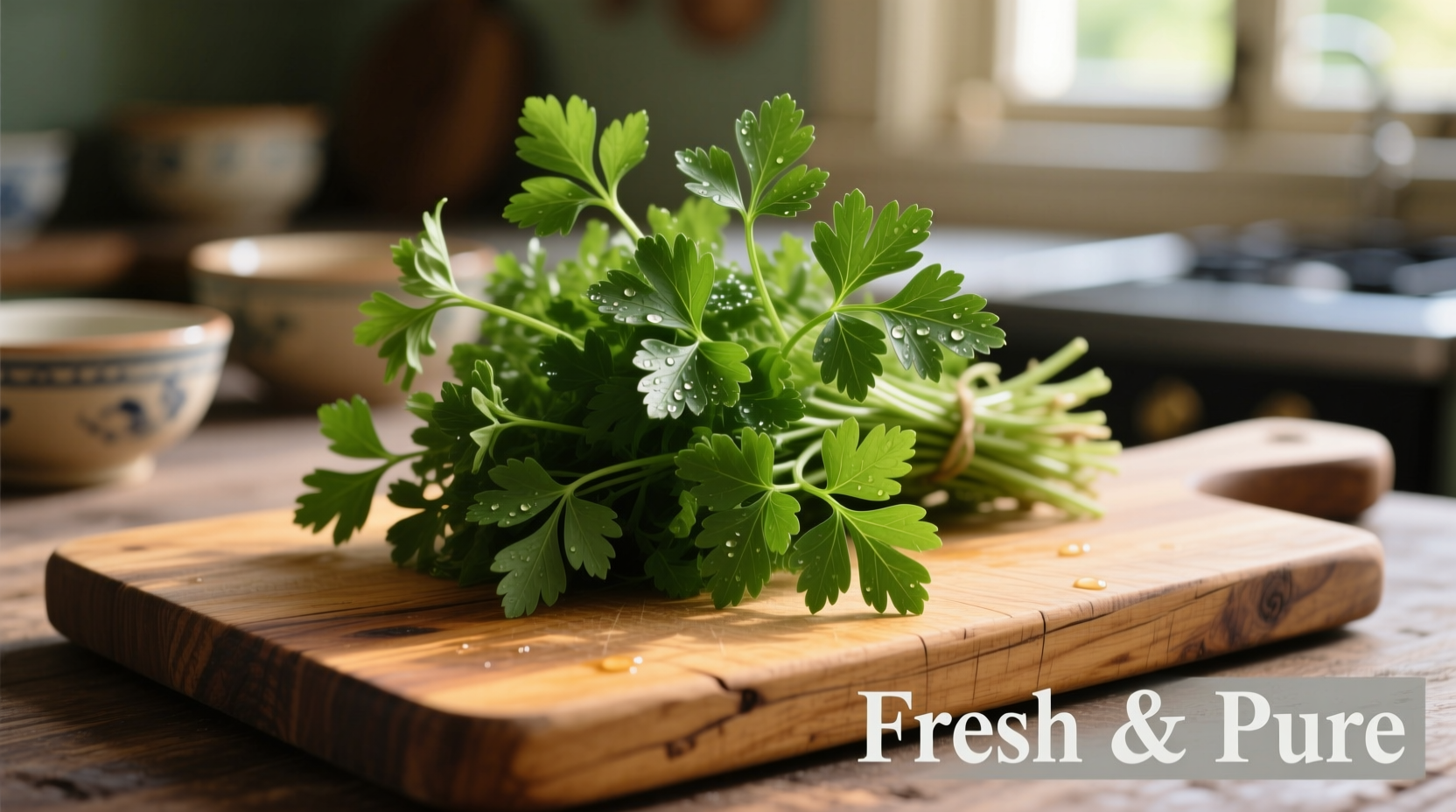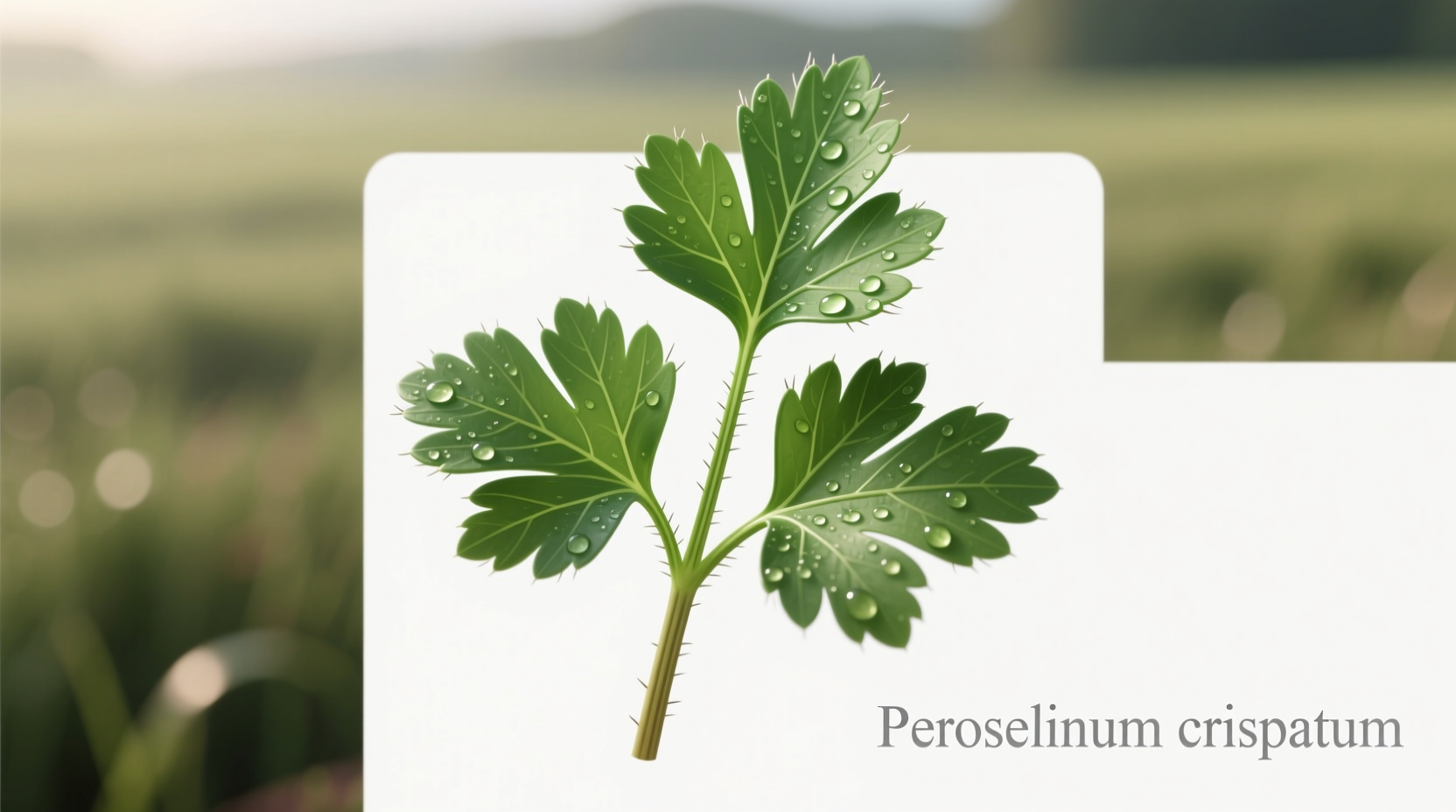When you reach for parsley in your kitchen, choosing the right variety makes all the difference. Italian flat leaf parsley—often called Italian parsley or flat-leaf parsley—stands apart from its curly counterpart with distinct advantages that transform everyday cooking. This comprehensive guide reveals why professional kitchens consistently choose this herb and how you can maximize its potential in your own cooking.
Why Chefs Choose Italian Flat Leaf Parsley Over Curly Varieties
Unlike the decorative curly parsley often used as garnish, Italian flat leaf parsley packs a robust, clean herbal flavor that enhances rather than overpowers dishes. Its smooth, flat leaves contain higher concentrations of essential oils, delivering a more pronounced taste that holds up during cooking. The broader leaves make chopping significantly easier, saving valuable prep time while providing consistent texture in finished dishes.
| Characteristic | Italian Flat Leaf Parsley | Curly Parsley |
|---|---|---|
| Flavor Profile | Robust, clean, slightly peppery | Milder, sometimes bitter |
| Leaf Texture | Smooth, flat, easy to chop | Crinkled, difficult to chop finely |
| Culinary Use | Integral flavor component | Primarily garnish |
| Shelf Life | 5-7 days refrigerated | 3-5 days refrigerated |
| Heat Tolerance | Holds flavor during cooking | Loses flavor quickly |
Historical Journey: From Ancient Remedy to Culinary Essential
Parsley's culinary evolution reveals why the flat leaf variety became chef's choice. Originally cultivated in the Mediterranean region around 3,000 years ago, parsley served medicinal purposes before entering kitchens. Historical records show ancient Greeks used it for ceremonial purposes, while Romans employed it as a breath freshener and garnish.
The critical turning point came during the Renaissance when Italian chefs began distinguishing between parsley varieties. By the 16th century, Italian cookbooks specifically referenced "prezzemolo liscio" (smooth parsley) for cooking, recognizing its superior flavor profile compared to the curly variety. This culinary preference spread across Europe, with French chefs adopting it during the 18th century as they developed classic sauce techniques requiring consistent herb flavor.
Maximizing Flavor: When and How to Use Italian Flat Leaf Parsley
Understanding the optimal applications transforms your cooking. Unlike curly parsley, Italian flat leaf parsley works effectively at multiple cooking stages:
Raw Applications for Maximum Freshness
Add chopped flat leaf parsley during the final minutes of preparation for dishes like tabbouleh, chimichurri, or gremolata. The herb's sturdy leaves maintain texture better than curly varieties when combined with acidic ingredients like lemon juice or vinegar. For pesto variations, flat leaf parsley creates a smoother texture while providing a more balanced herbal note compared to basil alone.
Cooking Through Heat: Building Flavor Foundations
Italian flat leaf parsley excels when incorporated early in cooking processes. Add whole sprigs to soups, stews, and braises where they infuse flavor throughout cooking and can be easily removed before serving. The herb's essential oils withstand heat better than curly parsley, maintaining flavor integrity in dishes requiring extended cooking times.
Storage Techniques That Preserve Freshness
Extend your parsley's shelf life with professional techniques. Trim stems and place in a glass with one inch of water, covering loosely with a plastic bag in the refrigerator. Change water every two days. For longer storage, chop leaves and freeze in olive oil cubes—this method preserves 90% of flavor compounds compared to 65% with traditional freezing, according to research from the University of Bologna's agricultural department.
Nutritional Powerhouse: Beyond Culinary Appeal
Italian flat leaf parsley delivers impressive nutritional benefits that surpass its curly counterpart. A quarter-cup serving provides:
- 110% of your daily vitamin K requirement
- 45% of daily vitamin C needs
- Significant amounts of vitamin A, folate, and iron
- Powerful antioxidants including flavonoids and volatile oils
Research published in the Journal of Agricultural and Food Chemistry confirms flat leaf parsley contains 23% higher concentrations of apiol and myristicin—compounds with demonstrated anti-inflammatory properties—compared to curly varieties. These compounds remain stable during cooking, making parsley a functional ingredient beyond mere flavor enhancement.

Perfect Pairings: Dishes That Shine with Italian Flat Leaf Parsley
Certain culinary applications particularly benefit from Italian flat leaf parsley's unique properties:
Mediterranean Seafood Preparations
The herb's clean flavor complements delicate fish without overwhelming. Try adding chopped parsley during the last minute of cooking for Mediterranean fish stews or as part of a herb crust for roasted fish. Its flat leaves adhere better to fish surfaces than curly varieties, ensuring even flavor distribution.
Classic French and Italian Sauces
Professional chefs rely on flat leaf parsley for sauces requiring herb integration. Incorporate it into beurre blanc, salsa verde, or persillade where consistent texture and flavor distribution are critical. The smooth leaves break down more evenly than curly parsley, creating a more harmonious sauce texture.
Vegetable Dishes with Depth
Elevate simple vegetable preparations by adding chopped parsley during the final stages of cooking. It particularly enhances roasted root vegetables, green beans, and tomato-based dishes. The herb's natural bitterness balances sweetness in vegetables like carrots and squash, creating more complex flavor profiles.
Avoiding Common Mistakes with Italian Flat Leaf Parsley
Even experienced cooks make these critical errors:
- Overcooking: Adding parsley too early in cooking processes diminishes its bright flavor. For maximum impact, add during the final 2-3 minutes of cooking.
- Improper washing: The flat leaves trap less debris than curly varieties, but still require thorough rinsing. Swirl in cold water rather than running under tap to preserve delicate leaves.
- Stem waste: The tender lower stems contain concentrated flavor. Finely chop and add to dishes requiring extra herbal notes without increasing leaf volume.
Where to Source Authentic Italian Flat Leaf Parsley
For the most flavorful experience, seek out locally grown varieties when possible. Italian flat leaf parsley grown in Mediterranean climates develops more complex flavor compounds. Look for vibrant green leaves without yellowing or wilting. When growing your own, harvest in the morning after dew has dried for maximum essential oil concentration.
Commercially available "Italian" parsley sometimes gets mislabeled. True Italian flat leaf parsley (Petroselinum crispum var. neapolitanum) has distinctively flat, pointed leaflets with smooth edges, unlike the ruffled edges of curly parsley (Petroselinum crispum crispum). The stems should be relatively thin and flexible, not thick and woody.
Conclusion: Elevating Everyday Cooking
Italian flat leaf parsley transforms from simple garnish to essential flavor component when properly understood and utilized. Its superior flavor profile, cooking versatility, and nutritional benefits make it indispensable for creating authentic Mediterranean and European dishes. By incorporating these techniques into your cooking routine, you'll discover how this humble herb elevates everyday meals with professional-quality results.











 浙公网安备
33010002000092号
浙公网安备
33010002000092号 浙B2-20120091-4
浙B2-20120091-4